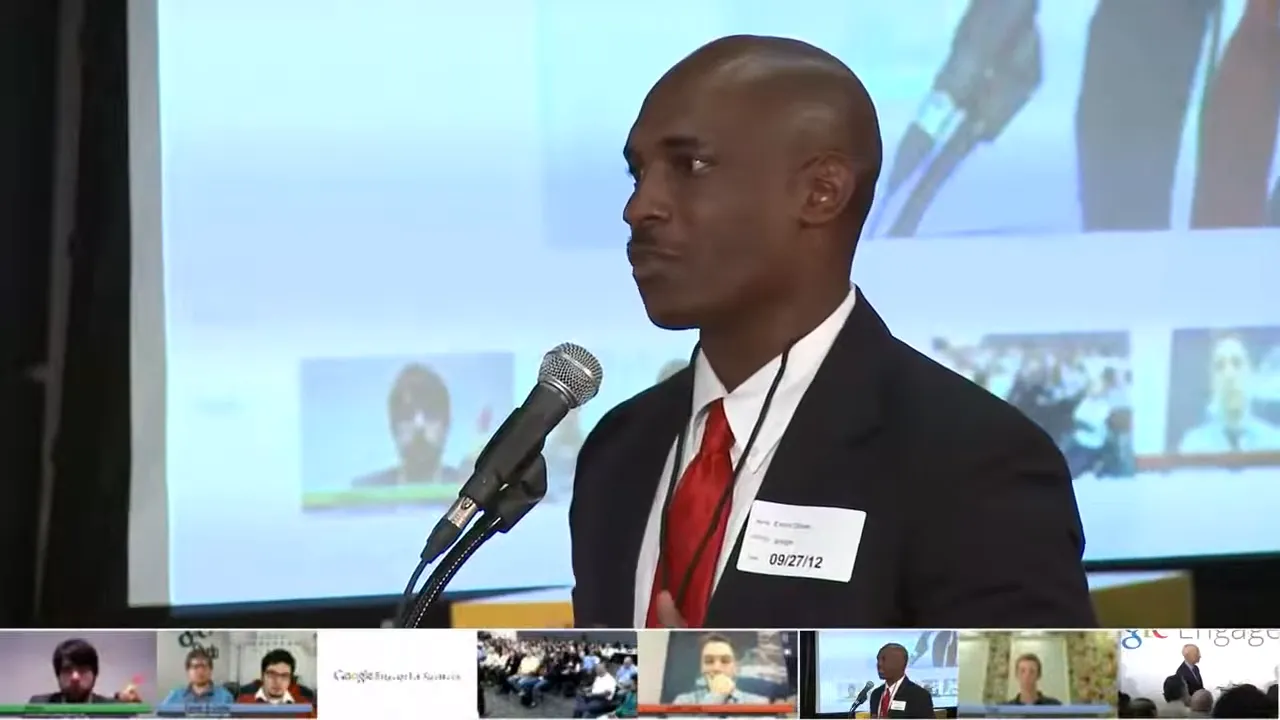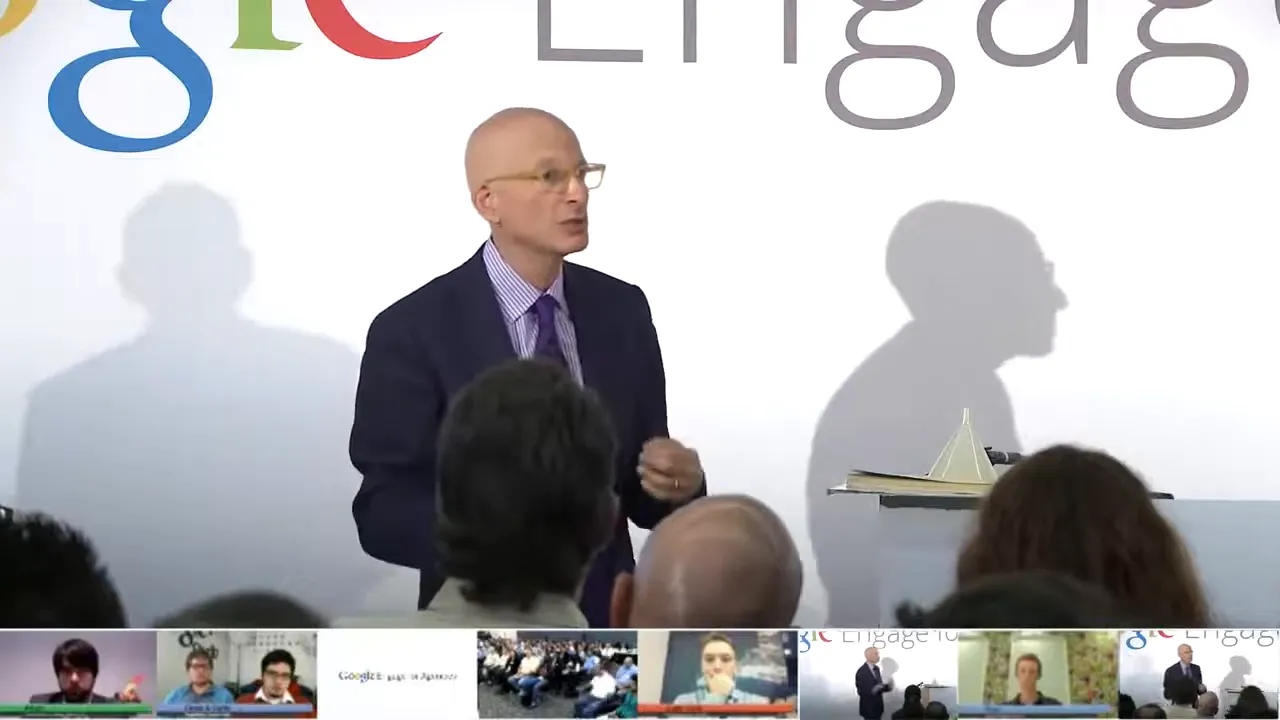May 22, 2025
MarketingDisruptors
Featured
Unlocking the Power of Storytelling in Digital Marketing with Seth Godin at Google HQ
My name is Rico Glover, in 2013, I had an incredible opportunity to attend a private training session with Seth Godin at Google's NYC headquarters. This was my first time at Google's HQ, and it was a transformative experience that reshaped how I think about digital marketing, branding, and connecting with clients. Today, I want to share the key insights I gained from that session, especially around the power of storytelling in marketing, and how you can leverage these ideas to grow your agency and engage your audience more meaningfully. Along the way, I’ll also explain how tools like Google Analytics can complement these strategies to maximize your impact.

Table of Contents
- Why Digital Marketing Is Not About Your Work
- The Role of Branding: Promise and Experience
- The Future-Proof Agency: Deep Change and Storytelling
- Leveraging Google Analytics in Your Storytelling Strategy
- Conclusion: Embrace Storytelling to Transform Your Marketing
- Frequently Asked Questions (FAQ)
Why Digital Marketing Is Not About Your Work
Seth Godin opened the session with a profound statement that challenged the typical marketing mindset: “It’s not about your work; it’s about the story that the people you are working with tell themselves.”
This simple but powerful insight reframes the entire approach to digital media and marketing. Often, marketers focus exclusively on showcasing their own products, services, or content, hoping to attract clients. But Seth emphasized that the real challenge isn’t just acquiring more clients — it’s about understanding the community you serve and identifying who shares your worldview.
When you identify people who share your worldview, you can connect them through stories that resonate deeply with their beliefs and desires. In other words, marketing becomes less about pushing a message and more about creating meaningful connections through shared narratives.

How to Find Your Tribe and Connect Through Storytelling
So, how do you find this community or tribe? It starts by asking yourself:
- Who in my community shares a worldview that aligns with my agency’s values?
- What stories are these people telling themselves about their challenges and aspirations?
- How can I connect these people with each other and with my brand in a way that feels authentic?
Once you answer these questions, you’re no longer just marketing to faceless customers—you’re engaging with a community that feels seen and understood. This approach transforms digital marketing from transactional to relational.
The Role of Branding: Promise and Experience
Another critical point Seth made was about branding. He defined branding as:
“The promise that an organization makes and the expectations that people have for what they think is going to happen.”
In other words, your brand is the set of expectations people carry when they think about your agency or product. These expectations are formed not by your advertising alone but by personal experiences, word of mouth, and the stories people share about you.
What’s crucial here is that personal experiences cannot be faked. You can invest in building a brand, but if your service or product doesn’t deliver on the promise, those expectations will be broken, and trust lost.

How to Build a Brand That Delivers
To build a brand that truly resonates:
- Ensure your product or service consistently meets or exceeds customer expectations.
- Create authentic stories that reflect your values and the values of your community.
- Use every touchpoint—from customer service to pricing—to reinforce the brand promise.
When your brand promise aligns with real experiences, customers become advocates who tell their own stories about your brand, multiplying your marketing reach organically.
The Future-Proof Agency: Deep Change and Storytelling
One of the most inspiring parts of the session was Seth’s vision for the agency of the future. He suggested that the agencies that will be not only profitable but also great for their clients are those willing to go deep:
“Let’s go deep into the organization: change the product, change the customer service, change the pricing, change the personnel, change the way you talk about yourselves. Someone has to do that.”
He made a compelling case that agencies already have the core skill needed for this transformation: storytelling. Agencies know how to craft narratives that connect brands to their audiences. Now, that same ability can be used internally to drive real organizational change.
By telling new stories about what your agency stands for and how it delivers value, you can lead meaningful shifts that transform how your clients experience your work and how your team operates.

Implementing Deep Change in Your Agency
Here are some practical steps to begin this transformation:
- Assess your current product and service offerings: Are they truly meeting your clients' needs?
- Review pricing strategies: Do they reflect the value you provide?
- Evaluate customer service: Is it consistent and aligned with your brand promise?
- Revisit your agency’s narrative: How do you talk about yourselves internally and externally?
- Engage your team: Empower personnel to become storytellers and brand ambassadors.
Taking these steps will not only improve client satisfaction but also position your agency as a leader in the digital marketing space.
Leveraging Google Analytics in Your Storytelling Strategy
While storytelling is the heart of marketing, understanding your audience through data is equally important. This is where tools like Google Analytics come into play.
Google Analytics helps you gather insights about who your visitors are, what content they engage with, and how they interact with your website. This data allows you to tailor your storytelling to meet your audience where they are, increasing relevance and engagement.
By combining the art of storytelling with the science of analytics, you can:
- Identify which stories resonate most with your audience.
- Discover new audience segments that share your worldview.
- Measure the impact of your campaigns and optimize them in real-time.
- Understand customer journeys and tailor narratives for each stage.
In my experience after the Google training, integrating Google Analytics insights with storytelling techniques has been a game-changer for delivering personalized marketing experiences that truly connect.
Conclusion: Embrace Storytelling to Transform Your Marketing
To sum up, the key lesson from my session with Seth Godin at Google HQ is that successful digital marketing is less about broadcasting your work and more about facilitating meaningful stories within your community. By identifying who shares your worldview and crafting authentic, experience-driven narratives, you build trust and engagement that no amount of traditional advertising can match.
Branding is the promise you make, but it’s the lived experiences of your clients that define your reputation. Agencies willing to dive deep into organizational change and storytelling will not only thrive but also create lasting value for clients.
Don’t forget to harness the power of Google Analytics to inform your stories and measure their impact. Together, storytelling and data create a powerful combination that can elevate your marketing and agency success.
I’m excited to continue applying these insights and encourage you to explore this approach in your own marketing efforts. If you want to learn more about marketing tips and tricks or Seth Godin’s ideas, keep exploring, keep telling your story, and leverage every tool at your disposal.
Frequently Asked Questions (FAQ)
What does Seth Godin mean by “the story people tell themselves”?
He means that marketing should focus on the narratives and beliefs your audience holds about themselves and their world. Your job is to connect with those stories authentically rather than just promoting your product.
How can agencies use storytelling to improve their services?
Agencies can use storytelling internally to redefine their brand, improve communication, and drive changes in product, pricing, and customer service that align with their values and client needs.
Why is branding considered a promise?
Branding sets expectations for customers about what they will experience. It’s a promise that your product or service will deliver certain value, and this promise is reinforced through personal experiences.
How does Google Analytics help with storytelling?
Google Analytics provides data about your audience’s behavior and preferences, enabling you to tailor your stories to what resonates most and to track how effective your marketing efforts are.
What should agencies focus on to be profitable and great for clients?
They should focus on deep organizational changes—improving products, services, pricing, and communication—while leveraging storytelling to connect authentically with their audience.
